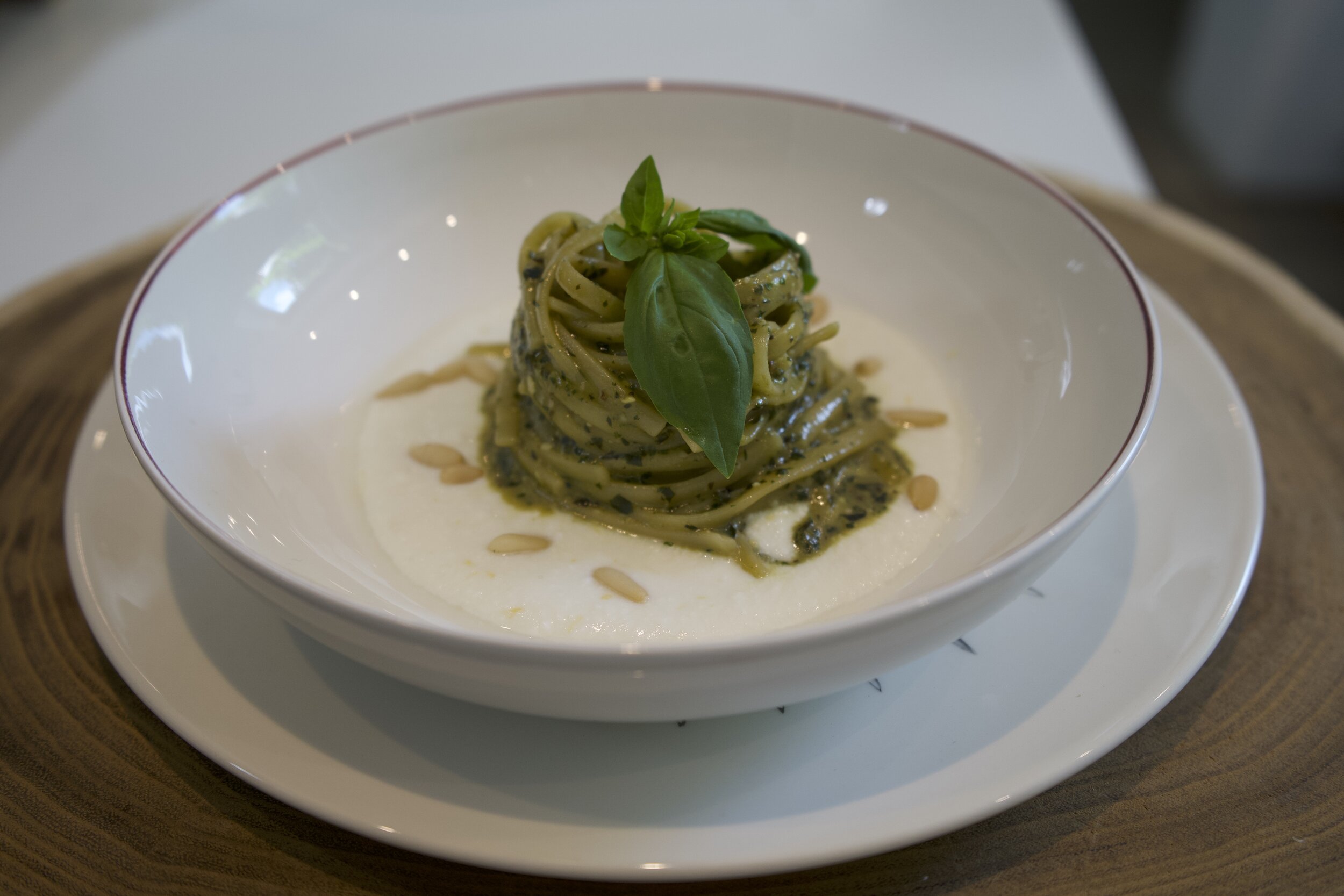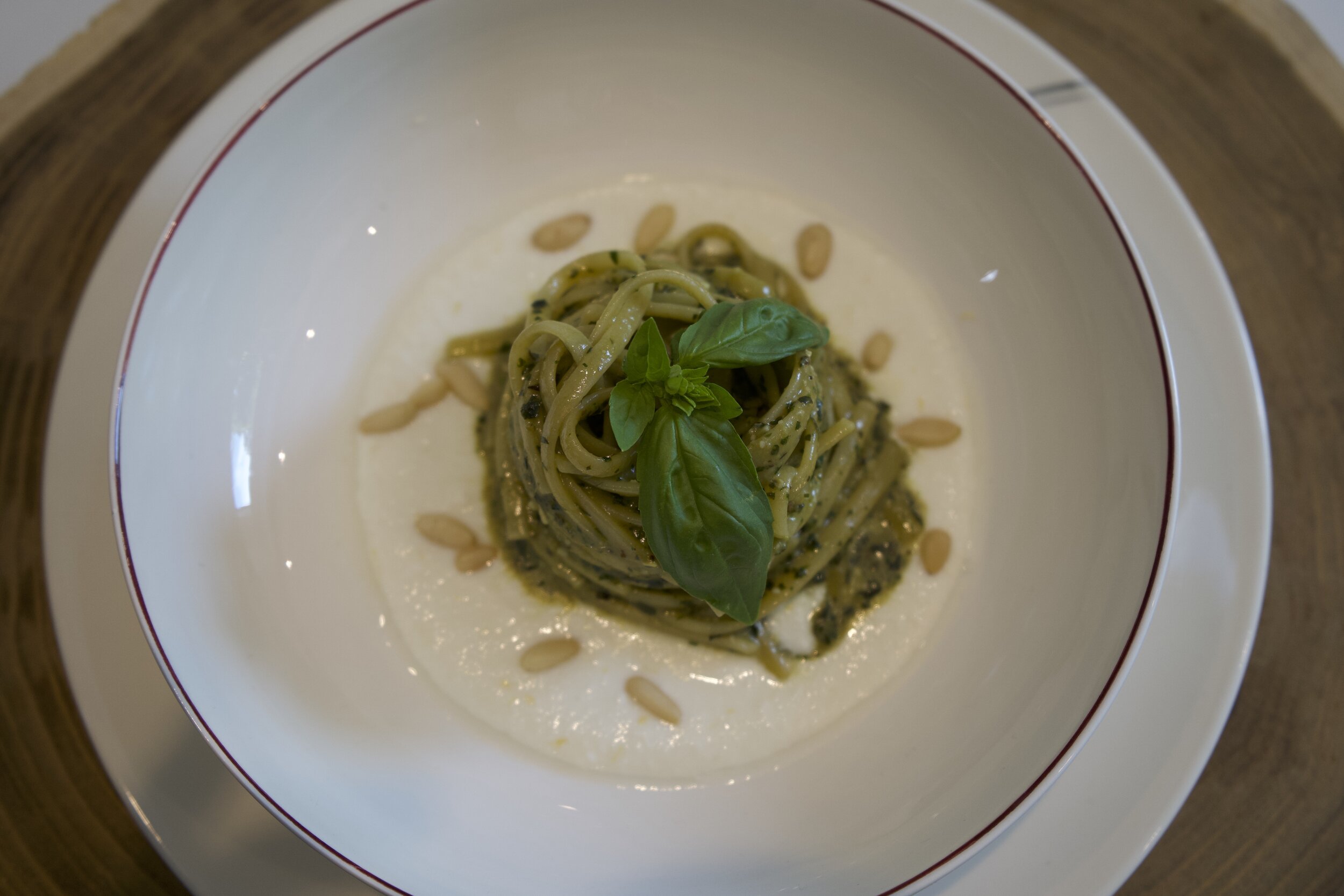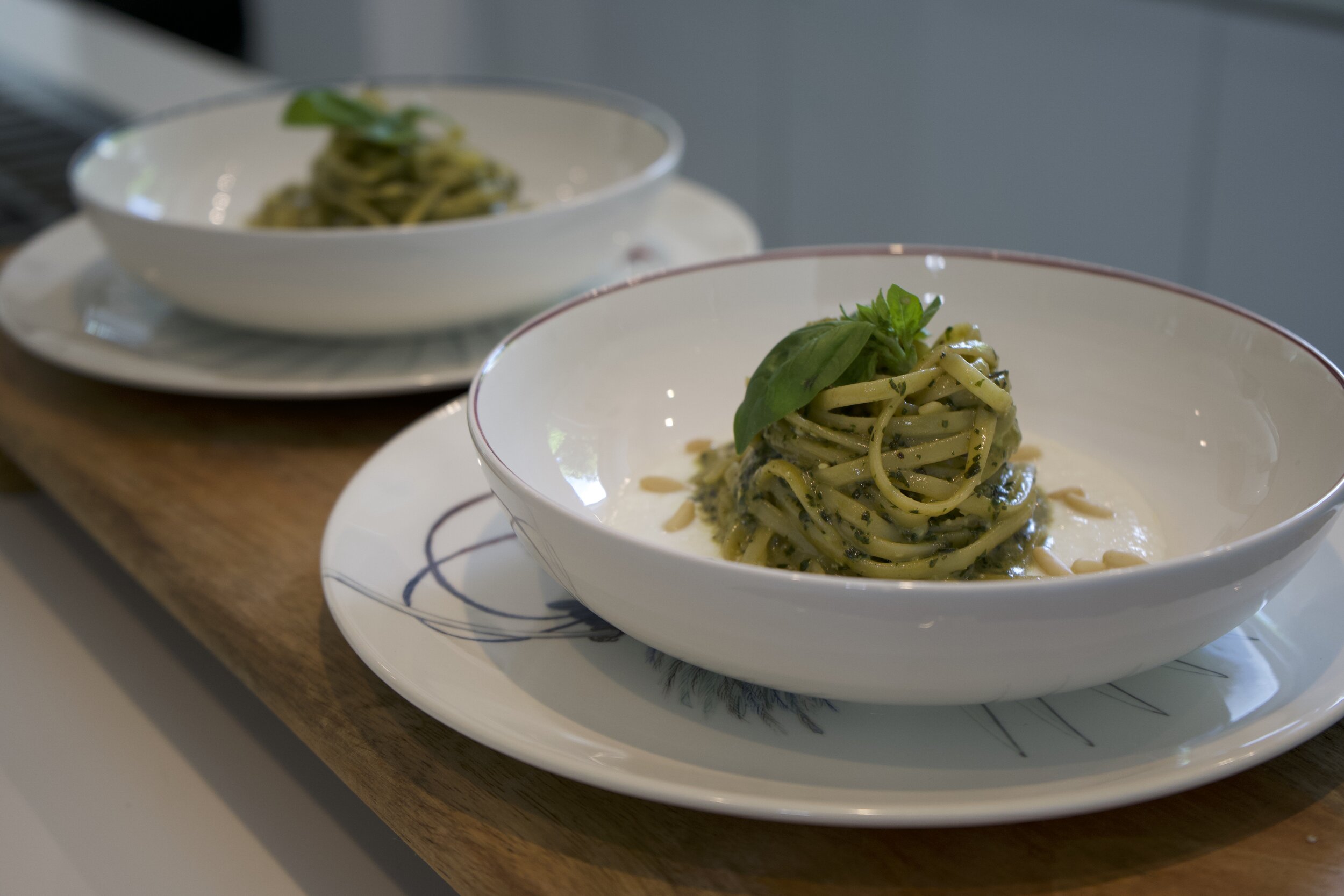Basil Pesto, Ricotta and Sicilian lemons with Vermentino Toscano
Hello dear ones! We are glad to be back with our Wine&Pasta pairing, showing you our second WINE REVIEW and VIDEO-RECIPE.
Together with Pasta Fabbri, we have chosen to make another Italian classic, linguine al pesto, reinterpreting it in our way with a fresh cream of Ricotta and Sicilian lemons zest. A very simple way to renew a dish that represents our country and culture. Pesto di basilico, especially for Italians living in Liguria, is an expression of both tradition and comfort food. It is a typical after-school lunch and a special retreat at nonna’s. With our personal variations, we tried adding a more refined touch, while always respecting the flavors of the main ingredients: basil, parmigiano, pine nuts and olive oil.
Please note: if you really want to slay your pesto, do not save on olive oil, choose a high-quality extra-virgin one and be generous with it! And of course, forget the industrial pasta you are used to and try using Pasta Fabbri with its highly selected grains. Thanks to its better amid release you will get a perfect sauce texture!
Wine tip: taste the dish with a glass of Tuscanio, a Vermentino produced by Azienda Agricola Bulichella, in Suvereto close to the Bolgheri area. Two delicate expressions of flavors that will match perfectly, never overwhelming one another! We can guarantee that you will want to go back to your glass after each forchettata.
Ingredients x2
180 g linguine
25 g basil leaves
35 g Parmigiano Reggiano + 15 g Pecorino Romano (or 50 g Parmigiano Reggiano)
1/2 garlic clove
a handful of pinenuts
50 ml extra-virgin olive oil
50 g ricotta
lemon zest
salt
Procedure
Put water into a pot and let it come to a boil. Don’t forget to salt the water when it’s boiling and before you put your pasta in it. You will ruin it if you salt it when cooked. When you hear the water boiling, put the linguine inside.
In the meanwhile, cut your Parmigiano and Pecorino Romano into pieces and take a few pine nuts. Cut a garlic clove and remove the inner sprout if it’s too hard for you to digest. Take a blender and put everything inside. Then, pour around 50 ml of extra-virgin olive oil and start mixing. Add your basil leaves to the blender and keep mixing until you obtain a sauce. If not creamy enough, just add a few more drops of olive oil. When ready, pour your pesto into a pan but keep it AWAY from heat.
Put around 50g of ricotta into a bowl and add a big spoon of cooking water. Mix everything to get a cream. It will have to be more liquid than the pesto, almost like a fondue. Add some lemon zest to the ricotta cream. It will give an extra touch of freshness to the dish!
Your linguine will now probably be ready to be drained. Put them in the pesto pan, remembering NOT to turn the heat on. It is crucial not to warm up the sauce. Stir the linguine using tongs and add a spoon of cooking water to reach the creaminess you want.
Now, you are just one step away from being ready! Take a pasta plate or a bowl and pour two spoons of ricotta cream. Spread it with your spoon and then use tongs to plate the linguine on top of it, turning them to make the shape of a nest. Add some pine nuts and basil leaves on top to garnish.
Put a glass of Vermentino on the side and Summer will be back to your houses in the blink of an eye!
Click here to watch our wine review and learn how to make the recipe.




